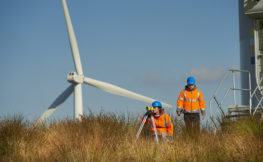Optimum growth rates vary by sector and over the lifecycle of a company. A sustainable growth rate is the maximum growth which can be achieved without needing to increase financial leverage. Successful growth requires a focused strategy, but this needs to be matched by increase in capability, for example, investment in infrastructure including human resources. Growth strategy tends to be achieved in four ways, singly or in combination:
- Launching new products
- Expanding into new territories
- Building capability or increased capacity
- Improved competitiveness
Know Your Market
Knowing suppliers boils down to managing risk for the organisation. Supply chains are often long and complex but only as strong as the weakest link. There are two main types of risk resulting from poor supplier knowledge:
Financial Risk
- Fraud
- Interruption to supply chain
- Shortages in labour / energy / raw materials
- Political
- Fines
Reputational Risk
- Quality issues
- Lack of ethical practice by supplier
- Violations of international law
- Environmental damage
- Bad press
Minimising risk can involve many actions but are essential in a globalised economy. Financial risk is often easily quantified but reputational risk can be more enduring. Ill-judged practices or products can damage your company and the harm can reverberate around all media with serious consequences for the brand. There are key actions which any corporation must take to minimise these risks, these are set out below:
Know your suppliers
- Develop a clear set of corporate values which all suppliers must adhere to
- Conduct rigorous supply chain mapping to reduce risk
- Quantify reputational risks so that informed decisions can be made
- Consider carefully the risk of outsourcing labour and services
- Any Service Level Agreement (SLA) to include right to audit including sub-tier suppliers
- Link the businesses to your own so that transparency is achieved
- Conduct rigorous due diligence testing before suppliers are on board
There is no excuse in law for ignorance. One of the main ways of knowing your suppliers is to conduct due diligence tests on all potential suppliers. Due diligence is a research task which critically appraises all available data on a supplier and will result in clear, defensible recommendations and improved knowledge of that supplier, its structures and links.
Environmental Sustainability
One of the main risks to growth in the global marketplace is looking after the environment, which is a current theme in business. Developing business practice which aligns with environmental sustainability is one way of attaining sustainable growth. A “slash and burn” approach to business is no longer acceptable, so Corporations are expected to lead on environmental sustainability both because of their current impact but also their power to make change.
For leaders, building a business case for environmental sustainability involves the following:
- Environmental sustainability is risk-free and consistent with reducing business exposure
- Initial start up costs will show longer-term cost savings, especially in energy
- Offers a competitive edge in attracting new customers and investment supporting growth
- Opportunity for business differentiation on the basis of sustainable environment offering
A word of warning though, in seeking to meet new customer demand for environmental sustainability don’t abandon products favoured by the existing customer base.
Tips for Achieving Sustainable Growth:
- Make the most of big data analytics to develop your market awareness either by developing in-house capacity or purchasing third party analysis.
- Know your suppliers by conducting rigorous supply chain mapping throughout your supply network.
- Build capacity for innovation by spending money on succession planning through research or staff development. This will keep your organisation ahead of the pack.
How do you sustain growth as a leader? Test yourself with our Scorecard.
If you’re a member, you can test yourself on Sustaining Growth and see if you meet the standard.
Spotlights
Further Resources
From the blog











